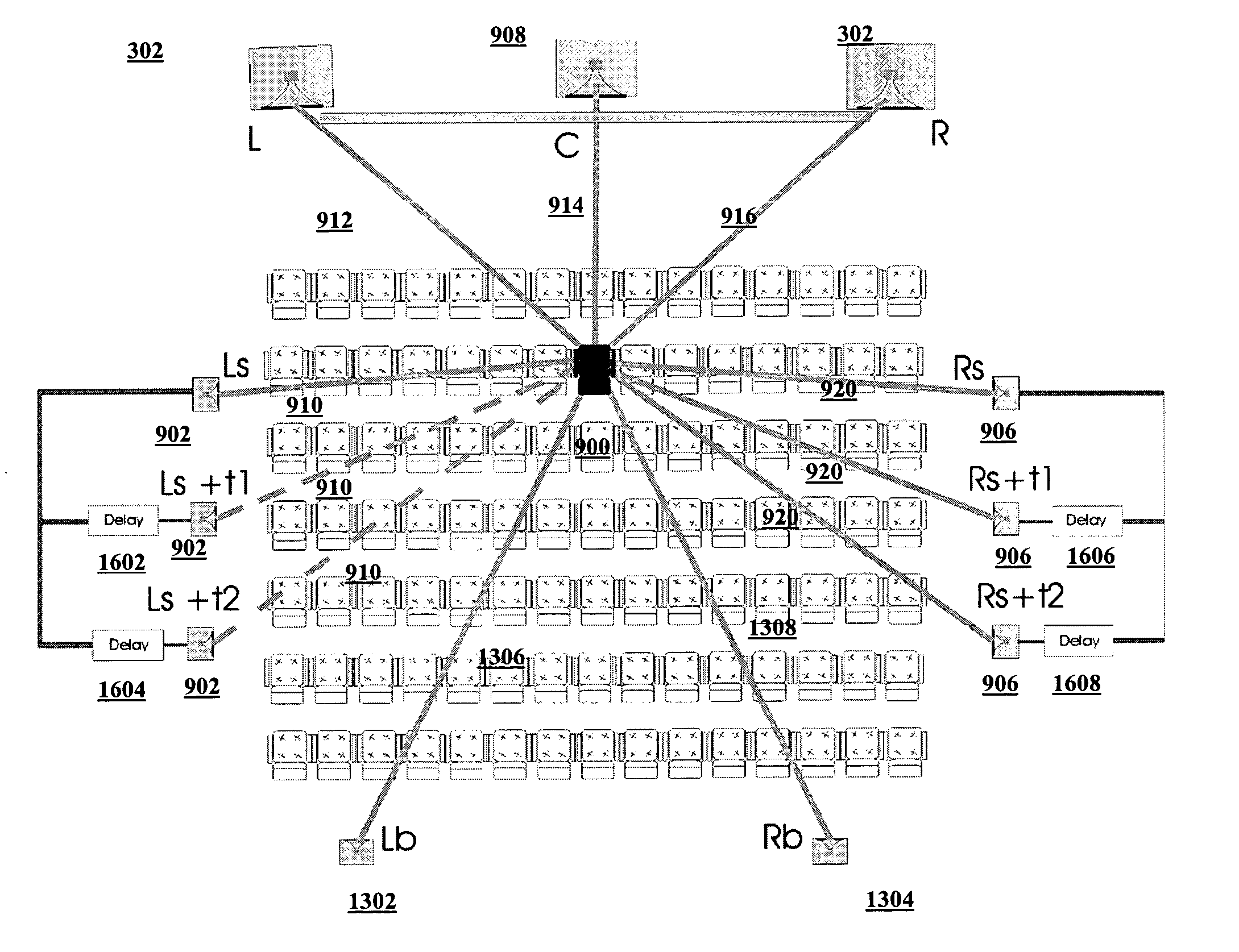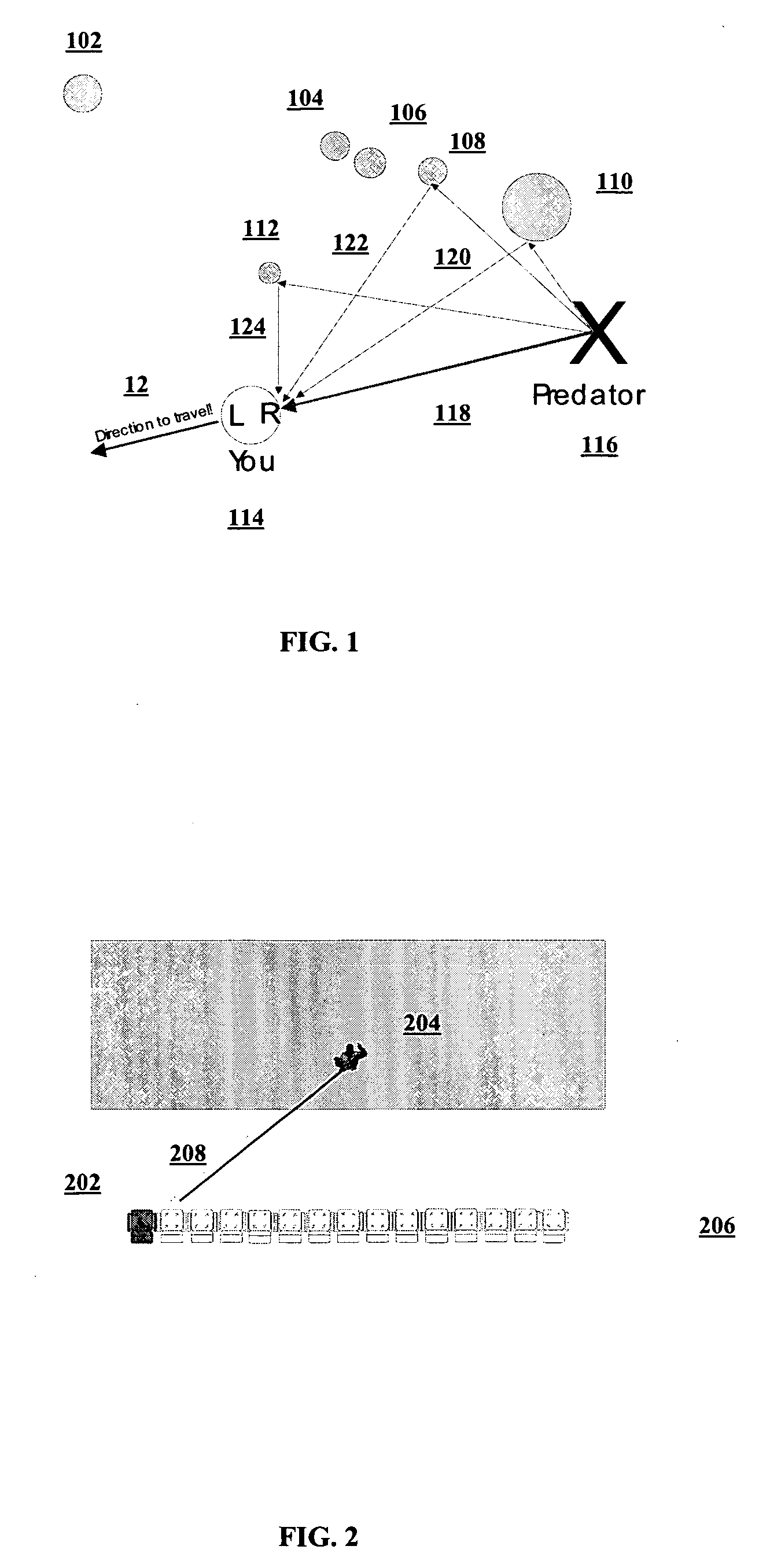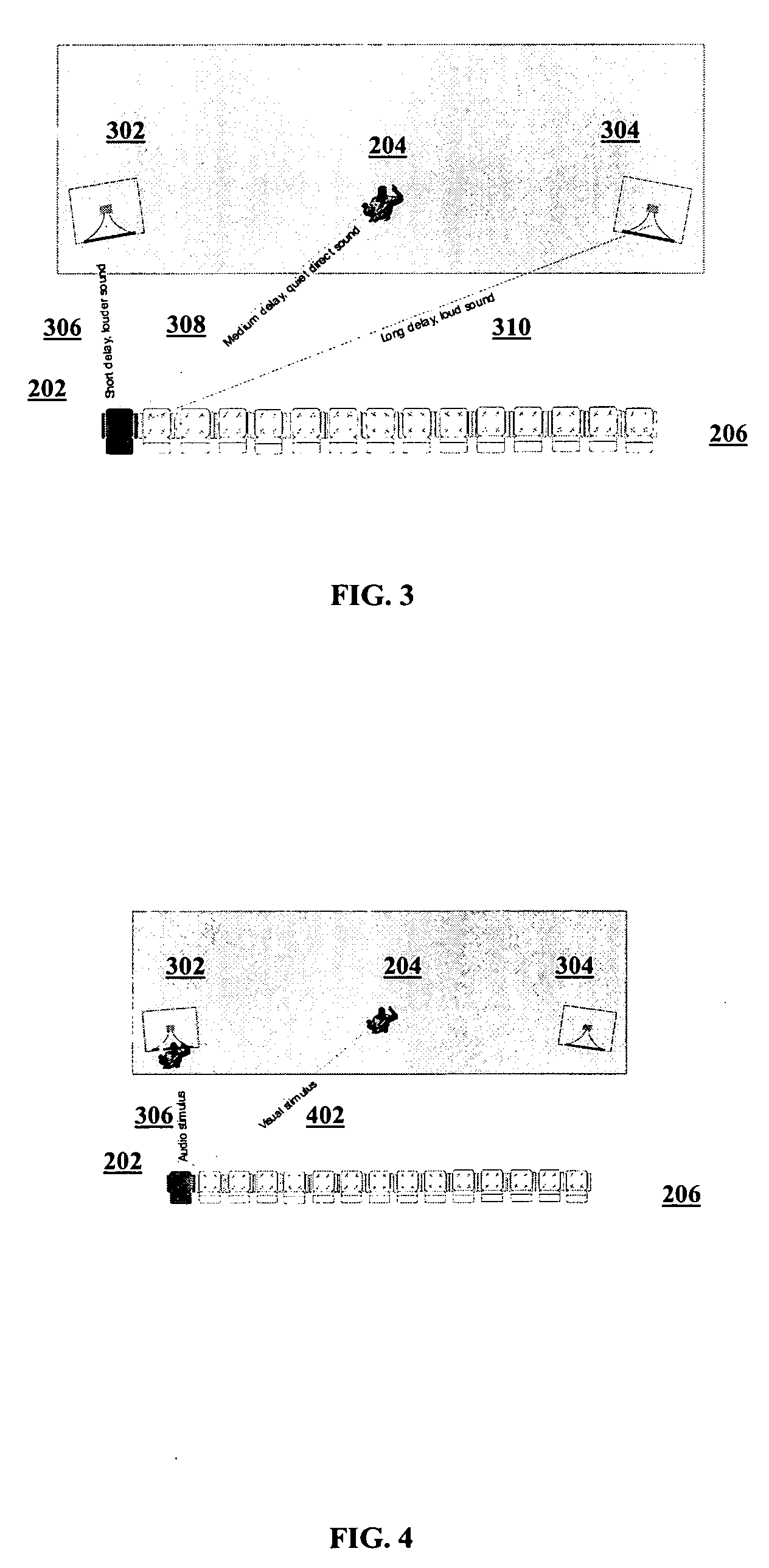Dynamically controlled digital audio signal processor
a digital audio signal processor and dynamic control technology, applied in the field of multi-channel audio reproduction, can solve the problems of not creating a realistic illusion of movement, limiting one or two listeners, and reducing the effect of realistic
- Summary
- Abstract
- Description
- Claims
- Application Information
AI Technical Summary
Benefits of technology
Problems solved by technology
Method used
Image
Examples
Embodiment Construction
[0040] While specific exemplary examples, environments and embodiments are discussed below, it should be understood that this is done for illustration purposes only. A person skilled in the relevant art will recognize that other components and configurations can be used without parting from the spirit and scope of the invention. In fact, after reading the following description, it will become apparent to a person skilled in the relevant art how to implement the invention in alternative examples, environments and embodiments.
[0041] Recent innovations in sound design make use of surround sound. Surround sound refers to using multiple audio tracks to make the sounds emanating from a theatre sound system appear more life-like. The soundtrack of a surround sound movie soundtrack allows the audience to hear sounds coming from all around them, and contributes to “suspended disbelief,” meaning when the audience member is captivated by the movie experience, and possibly not aware of real-wo...
PUM
 Login to View More
Login to View More Abstract
Description
Claims
Application Information
 Login to View More
Login to View More - R&D
- Intellectual Property
- Life Sciences
- Materials
- Tech Scout
- Unparalleled Data Quality
- Higher Quality Content
- 60% Fewer Hallucinations
Browse by: Latest US Patents, China's latest patents, Technical Efficacy Thesaurus, Application Domain, Technology Topic, Popular Technical Reports.
© 2025 PatSnap. All rights reserved.Legal|Privacy policy|Modern Slavery Act Transparency Statement|Sitemap|About US| Contact US: help@patsnap.com



